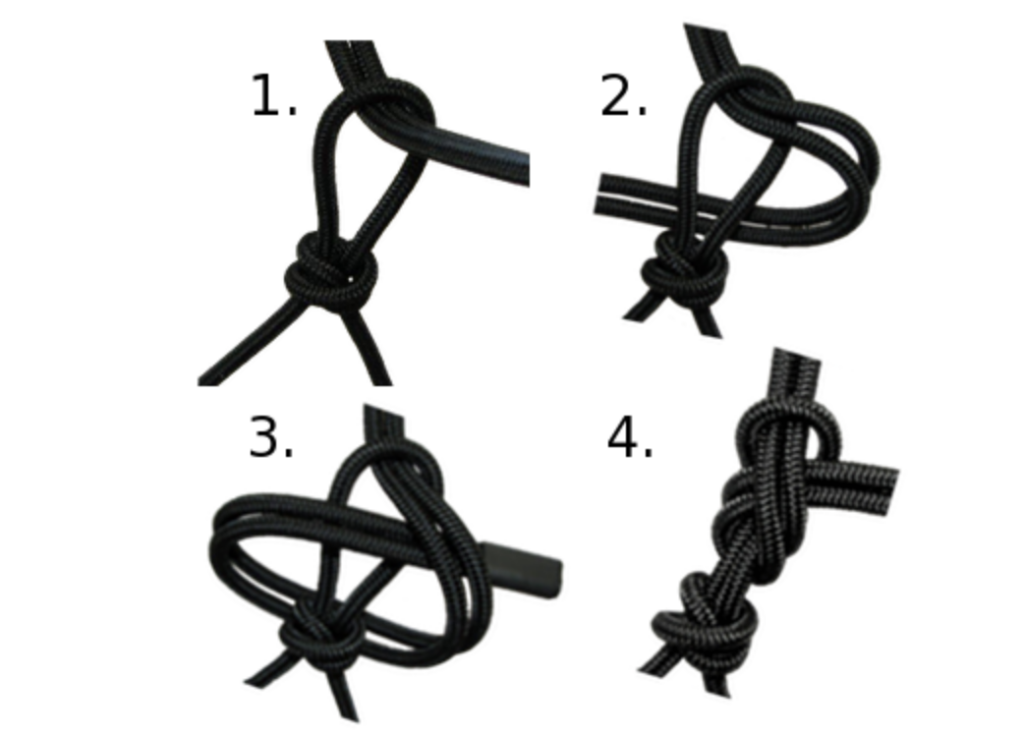There are people (me included) who never use anything but a rope halter.
Not that a web nylon or leather halter is bad, but it lacks some of the advantages that a rope halter provides.
Advantages Of A Rope Halter
A rope halter transfers a signal much cleaner and easier.
And it fits a horse’s head in a more natural way.
The 1 / 4 inch diameter I like to use is large enough not to be severe, but small enough to connect with the horse.
The adjustable noseband provides a more custom fit.
And instead of coming up the side of a horse’s head, like a flat halter does, it comes underneath the jaw.
So if a horse were to pull back, he would feel the halter not only on his poll, but also under his jaw.
Go here for some essential groundwork exercises: Groundwork For Horses
Tying It On
Of course you want to make sure you tie the rope halter correctly when you put it on a horse.
Always bring the end piece down through the loop.
Then bring the tail of the end underneath the back of the loop, bring it through, and tie it above the knot.
When tied, the end will be pointing away from the horse’s eye.

But that’s only half the picture.
Lead Rope
The halter rope needs to be stiff enough to keep its shape, but not so stiff that it’s harsh.
You could go buy some flimsy rope at the hardware store and tie up a rope halter, but it would not have the function that makes a good rope halter so effective.
If the lead rope doesn’t have some weight and isn’t made of a quality material, it won’t have any feel to it.
A subpar lead rope will also hinder communication.
I prefer elite yacht rope which has some density but yet is extremely limber.
Rope Halter Construction
The proper construction of the halter is also important.
These days, you see rope halters that don’t have the two nose knots in the correct place.
These knots should not be much more than a fist width apart.
That way, they lay inline with the conformation of a horse’s nose.
I’ve personally never seen the need for a rope halter with four nose knots.
Two knots should be sufficient for any thing you want to do.
Rope Halter Hack
A few years ago, I discovered these little clips that take the place of tying the halter when you put it on.
They make it to where you can actually take the halter off and on with one hand.
And do it in two seconds.
A happy customer even made this little video about it: A New Must Have For My Horse
Now I’m spoiled by those and use them on all the halters I make.
It does add a piece of metal to an otherwise metal-free halter and lead, but I’ve never had any trouble with one coming loose or causing a problem.
And when you’re getting off and on a bunch of horses each day, those few seconds add up.
Plus, you never have the issue of the halter knot getting tight if a horse were to pull back.
(As a side note, I would never hard tie any horse that was not first taught to easily yield to halter pressure. For help teaching that, see the link to our Groundwork Series below.)
You can order one of my hand-made rope halters here: Buy Carson’s Rope Halter and Lead Rope
And if you need some help with Groundwork, we have a special promotion for our Groundwork Series.
Check it out here: Carson James Groundwork Series